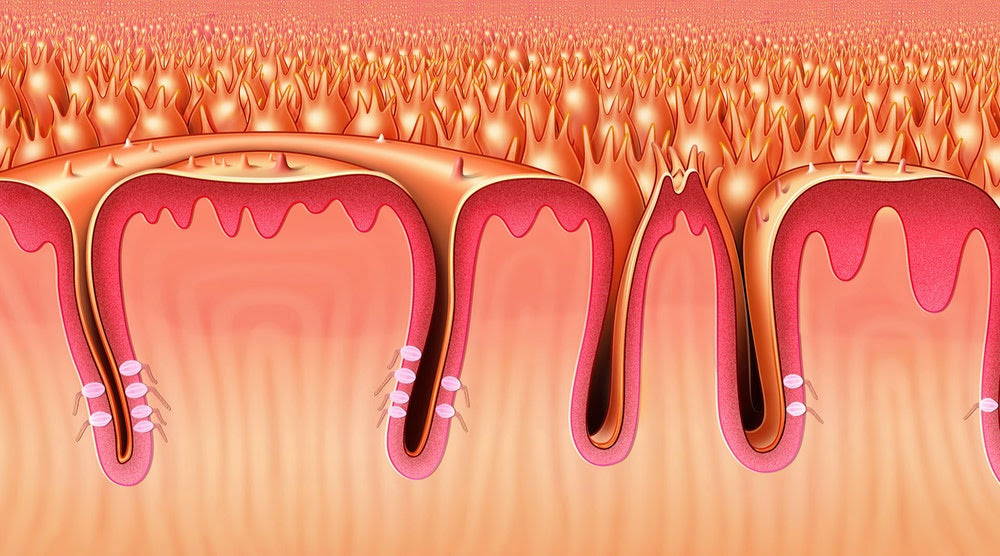WHY TESTICLES HAVE TASTEBUDS
A viral TikTok video reveals the weird truth inside our testes.
IT STARTS OFF WITH A QUICK CLIP OF A HIGHLY EXCITED MAN NAMED NIK LONGO WHO LOOKS INTO THE CAMERA AND DECLARES: “TESTICLES HAVE TASTE BUDS!”
The video then abruptly cuts to TikTok creator Kelley Lorraine, who is pouring caramel coffee syrup into a plastic bowl. Kelley giggles as she attempts to convince her husband, Luis, to dip his testicles into the bowl to taste it. Another cut, and he seems to do so, just out of frame, apparently not looking at the contents. The couple bursts into uncontrollable laughter when he asks, “What is that? Chocolate?”
That video has racked up over 1 million likes and spurred a trend where others attempt to taste their food this way. Test cuisine ranges from pickle juice to coffee to fried chicken.
Obvious shock factor and viral TikTok trends aside, Longo’s original claim is somewhat correct: Scientists have found taste receptors in the testis.
Let’s dip into the facts.
CAN TESTICLES “TASTE” FOOD?

The presence of taste receptors in the body is an area of vigorous study. In addition to the tongue, researchers have found them in the lungs, stomach, urinary bladder, pancreas, and testis.
According to food nutrition scientist Emma Beckett, a lecturer at the University of Newcastle Australia, “the answer is well, yes, but no!” Beckett explains that there are taste receptors in most organs but that they are present inside the cells, not on the surface.
“More importantly, receptors present in the testicles don’t connect to the taste centre or the gustatory cortex in the brain,” she tells Inverse.
Ole Mouritsen, an astrophysicist at the University of Copenhagen, describes taste as a sensation mediated by a range of so-called receptors that detect various substances and then, on contact, produce an electric nerve signal.
The receptors in the tastebuds transmit that nerve signal to the taste center in the brain, where it is processed and interpreted — usually as a taste. This can be one of the five taste modalities (sweet, sour, salty, bitter, umami) or a combination.
As Beckett notes, there are similar receptors found in many parts of our body, but they do not send signals to the taste center.
“Sometimes people in those videos ‘guess’ the right food and think they are ‘tasting,” she says, but she concludes they’re “either pretending or just smelling the food.”
In short, while testes do have taste receptors, they are not capable of making a distinction between sweet and salty.
Indiana urologist Alexander Tatem puts it bluntly: “It is fantasy to taste foods like soy sauce with our skin.”
TASTEBUDS AND FERTILITY

WHY TASTE RECEPTORS ARE IN THE TESTIS — The taste receptors in the testis tissue, TAS2Rs specifically, have been found to have multiple functions. Some studies speculate they influence male gamete physiology, or sperm motility and function.
Other studies suggest that the presence of these receptors, particularly the bitter taste receptors, allow sperm cells to detect noxious substances in their environment.
In 2020, scientists at the Siena University in Italy studied the semen of 15 patients and the testis tissue of six in detail. They confirmed the presence of several taste receptors, including TAS2Rs and TRPM5.
Other studies have similarly suggested these receptors drive spermatogenesis, sperm maturation, the sperm’s migration through the female genital tract, and even the final fusion of sperm and egg (a biological marvel far outside TikTok’s community guidelines).
Simply put, the presence of these receptors in the testis tissue influences fertility. This is a groundbreaking recent discovery, says Premal Patel, a urologist working at the Manitoba Fertility center in Winnipeg.
Patel treats patients whose cause of infertility is unknown, which is common: there are many causes for infertility, but 30 percent of cases are idiopathic or attributable to an unknown cause.
“While this research is still novel, studies looking at the receptors have the potential to provide clinicians guidance on where they should be looking when it comes to idiopathic infertility cases,” he says.
In most idiopathic cases of male infertility, the only treatment option is to optimize the testicular environment, says Tatem.
Researchers at the Monell Chemical Senses Center in Philadelphia hypothesize that inhibitors of taste receptors, or mutations in these genes, could result in infertility or sterility that could be responsible for some forms of idiopathic male infertility.
This most intimate aspect of men’s health may, in many cases, be a matter of taste.
Source: Why testicles have tastebuds: Viral TikTok exposes a weird anatomical truth













